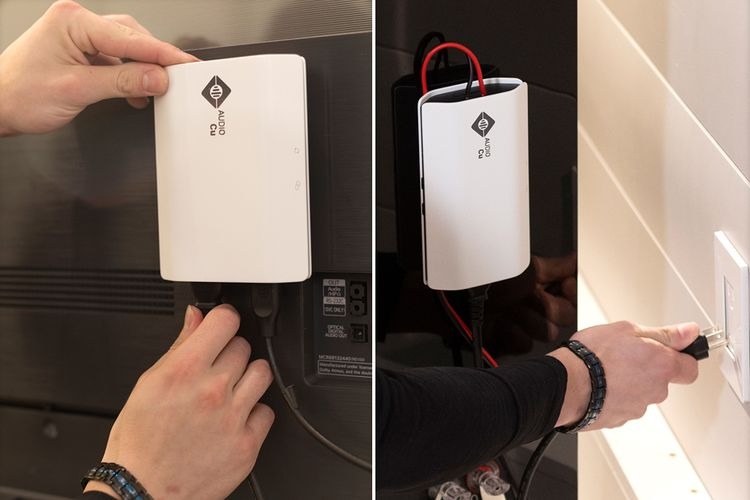This new gadget sends Dolby Atmos audio through your home outlets — here's how it works
The Fasetto Audio Cu now has Dolby Atmos certification

The connectivity company Fasetto recently announced that its forthcoming Audio Cu system has received Dolby Atmos Product certification. The system, spotted by The Verge, connects devices like TVs to speakers and subwoofers using the existing electrical outlets in a home.
The Audio Cu is supposed to be an alternative to running and hiding speaker wires around your home theater setup. It's also supposed to be an alternative to wireless systems that run on Wi-Fi or Bluetooth connections, which have their own challenges with latency and signal.
In an example that the company shows on its website, for a simple three speaker (two towers and a center channel), a subwoofer and a TV set up, you would need five Audio Cu boxes and five wall plugs. The TV needs a transmitter, with Fasetto claiming you don't need an AV receiver, while the speakers each get a receiver device.
The Audio Cu device has to be plugged directly into a power outlet to work properly. So, for your speaker plugs, you'll need to open a second plug spot or a surge protector if you're plugging more than one device into the outlet.
Fasetto claims that the system's latency is less than 20 milliseconds and is not affected by any interference like that of other home electronics. Their examples include vacuum cleaners and microwaves.
The speakers need red and black terminals, and Fasetto claims up to 10 channels can be sent via power lines from one transmitter, which will accommodate up to a 7.1.2 Dolby Atmos setup. Up to six transmitters can be used in separate setups, with Fasetto saying that the Audio Cu system maxes out at 32 channels.
A separate app for setup and configuration also contains EQ adjustments, and audio presets. However, they say normal volume control can be done via your standard remote.
Get instant access to breaking news, the hottest reviews, great deals and helpful tips.
Fasetto has not released a price or launch date for the Audio Cu system. So, it's hard to estimate how much a package of transmitters and receivers will run you if you add them to your home theater setup.
From what we can tell, this would probably work best in a small home or apartment where outlets are relatively close when setting up your system. Otherwise, you're running wires to power the speakers, defeating the purpose. If you have them, it might work well in a larger space with more strategically placed outlets.
More from Tom's Guide
- Samsung Galaxy S24 FE vs. Galaxy S24: Here's the biggest differences
- OpenAI confirms AI agents are coming next year — what it means for you
- Sony has a new anti-scalping system for PS5 Pro pre-orders — here's what we know

Scott Younker is the West Coast Reporter at Tom’s Guide. He covers all the lastest tech news. He’s been involved in tech since 2011 at various outlets and is on an ongoing hunt to build the easiest to use home media system. When not writing about the latest devices, you are more than welcome to discuss board games or disc golf with him. He also handles all the Connections coverage on Tom's Guide and has been playing the addictive NYT game since it released.
